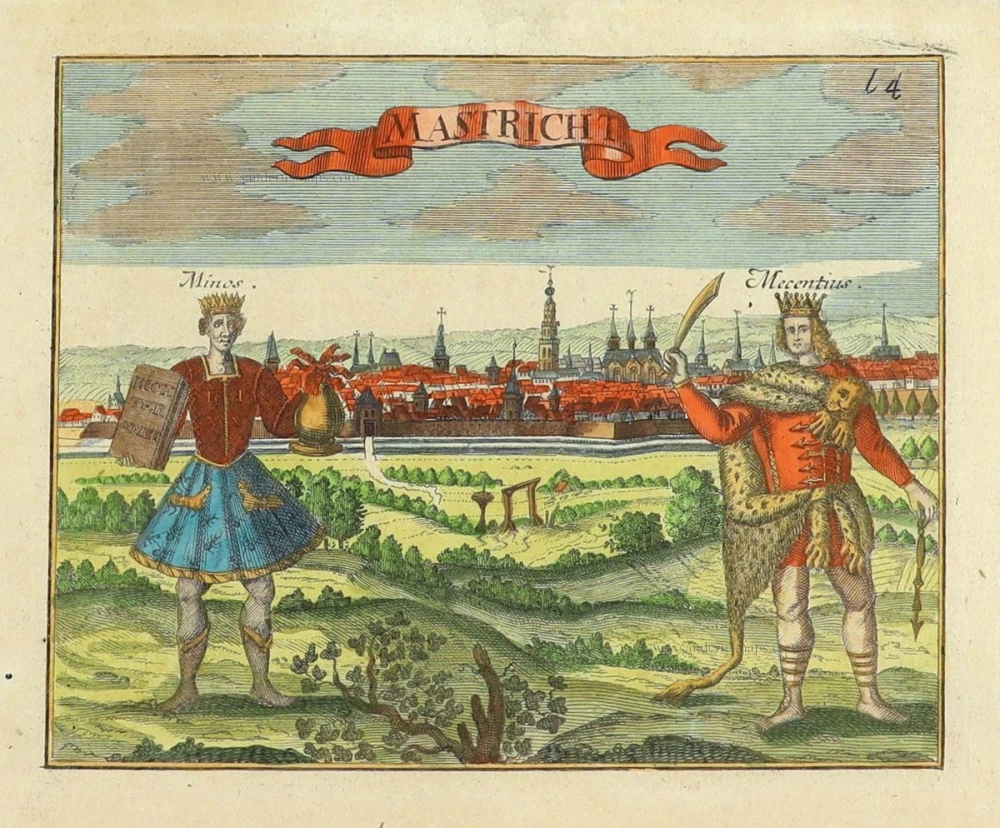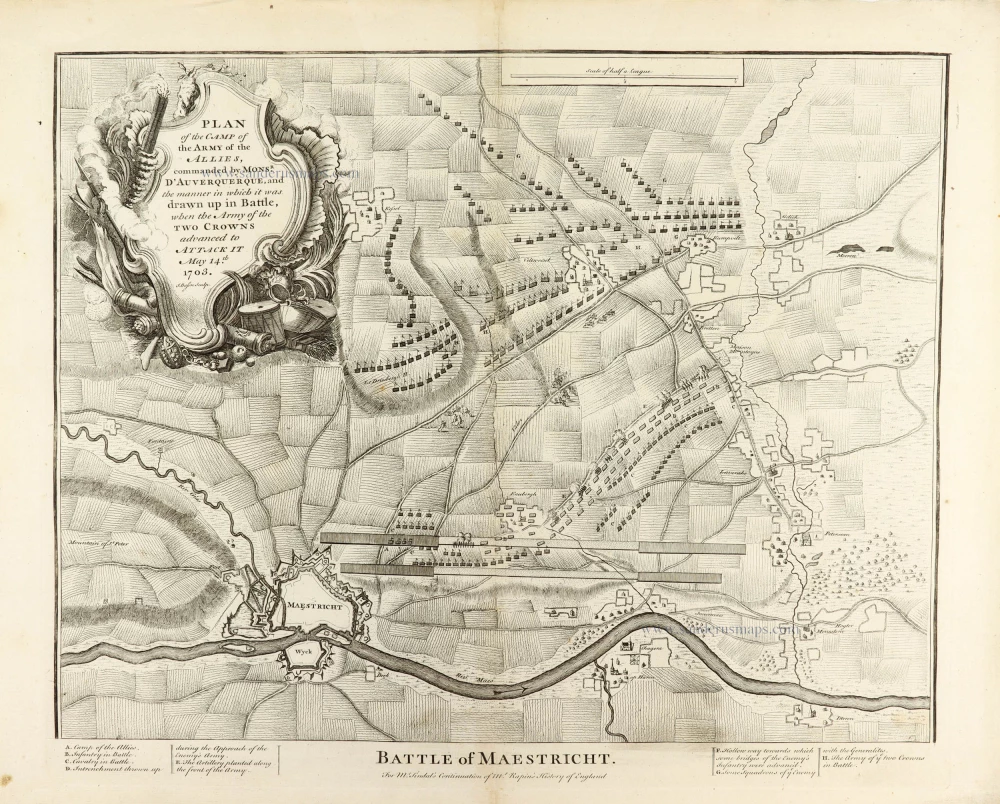Maastricht, the Spanish troops leaving, 27 April 1577, by Frans Hogenberg 1577
Frans (Franz) Hogenberg (1535-1590)
Frans Hogenberg was a Flemish and German painter, engraver, and mapmaker. He was born in Mechelen as the son of Nicolaas Hogenberg.
By the end of the 1560s Frans Hogenberg was employed upon Abraham Ortelius's Theatrum Orbis Terrarum, published in 1570; he is named as engraver of numerous maps. In 1568 he was bannend from Antwerp by the Duke of Alva and travelled to London, where he stayed a few years before emigrating to Cologne. There he immediately embarked on his two most important works, the Civitates published from 1572 and the Geschichtsblätter, which appeared in several series from 1569 until about 1587.
Thanks to such large scale projects as the Geschichtsblätter and the Civitates, Hogenberg's social circumstances improved with each passing year. He died as a wealthy man in Cologne in 1590.
Hispanigscher nation außzug auß Brabant - Maestricht.
Item Number: 1470 Authenticity Guarantee
Category: Antique maps > Europe > The Netherlands - Cities
The Spanish troops leaving Maastricht, 27 April 1577, by Frans Hogenberg.
Title: Hispanigscher nation außzug auß Brabant - Maestricht.
Wie woll gar vill leut in Brabant
Ihr haab und gutt verloren handt
¨¨
Anno Dñi M.D.MXXVI am XXVII Aprill.
Date of the first edition: 1577.
Date of this map: 1577.
Copper engraving, printed on paper.
Image size: 205 x 265mm (8.07 x 10.43 inches).
Sheet size: 265 x 335mm (10.43 x 13.19 inches).
Verso: Blank.
Condition: Excellent.
Condition Rating: A+.
From: Hogenberg Frans, Geschichtsblätter. Köln, 1577.
Frans (Franz) Hogenberg (1535-1590)
Frans Hogenberg was a Flemish and German painter, engraver, and mapmaker. He was born in Mechelen as the son of Nicolaas Hogenberg.
By the end of the 1560s Frans Hogenberg was employed upon Abraham Ortelius's Theatrum Orbis Terrarum, published in 1570; he is named as engraver of numerous maps. In 1568 he was bannend from Antwerp by the Duke of Alva and travelled to London, where he stayed a few years before emigrating to Cologne. There he immediately embarked on his two most important works, the Civitates published from 1572 and the Geschichtsblätter, which appeared in several series from 1569 until about 1587.
Thanks to such large scale projects as the Geschichtsblätter and the Civitates, Hogenberg's social circumstances improved with each passing year. He died as a wealthy man in Cologne in 1590.





